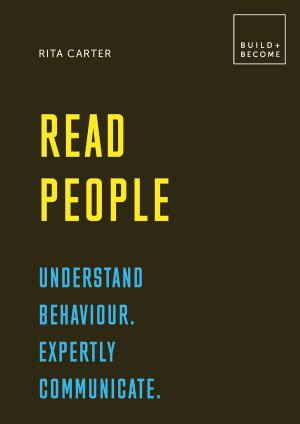The Values Toolkit
Application Manual for The Owner's Manual for Values at Work
Business & Finance, Human Resources & Personnel Management, Training, Nonfiction, Health & Well Being, Psychology, Social Psychology| Author: | Pierce Johnson Howard | ISBN: | 9780692699881 |
| Publisher: | Center for Applied Cognitive Studies | Publication: | May 2, 2016 |
| Imprint: | Center for Applied Cognitive Studies | Language: | English |
| Author: | Pierce Johnson Howard |
| ISBN: | 9780692699881 |
| Publisher: | Center for Applied Cognitive Studies |
| Publication: | May 2, 2016 |
| Imprint: | Center for Applied Cognitive Studies |
| Language: | English |
This book is an update of the values clarification literature of the 1970s in the works of Simon, Howe, Kirschenbaum, Harmin, and Hawley. Originally intended for use in the classroom, this work both updates the content to the current scene and applies it to the world of work. It includes eight scripts that cover team building, employee motivation, succession planning, corporate values statements, relationship building, and personal self-exploration. The 42 activities inlcude updates of old favorites such as the Pie of Life (now the Pie of Work), Alligator River (now Border Crossing), and 20 Things I Love to Do (now things You Love to Do), plus new activities such as Target Job Rating, Job/Successors Matrix, What Makes Me Tick, and Mission and Values. The activities typically include worksheets that may be copied and used with teams, training classes, individuals, partners, and other settings.
It is intended as a companion piece to The Owner's Manual for Values at Work, also by Dr. Pierce J. Howard (CentACS, 2016). The Owner's Manual provides the history and theory of working with values, while the Toolkit provides the How To. The Owner's Manual introduces the reader/professional to the seven-step method of values clarification: 1) To what degree do you cherish your value/choice?, 2) To what degree do you openly proclaim it to others?, 3) To what degree did you consider alternatives?, 4) To what degree did you consider the consequences of each option?, 5) To what degree did you choose freely?, 6) How do you maintain, or nurture, your value?, and 7) To what degree do you nurture it repeatedly?
Each activity in the Toolkit explores one or more of the seven steps of the values clarification model.
This book is an update of the values clarification literature of the 1970s in the works of Simon, Howe, Kirschenbaum, Harmin, and Hawley. Originally intended for use in the classroom, this work both updates the content to the current scene and applies it to the world of work. It includes eight scripts that cover team building, employee motivation, succession planning, corporate values statements, relationship building, and personal self-exploration. The 42 activities inlcude updates of old favorites such as the Pie of Life (now the Pie of Work), Alligator River (now Border Crossing), and 20 Things I Love to Do (now things You Love to Do), plus new activities such as Target Job Rating, Job/Successors Matrix, What Makes Me Tick, and Mission and Values. The activities typically include worksheets that may be copied and used with teams, training classes, individuals, partners, and other settings.
It is intended as a companion piece to The Owner's Manual for Values at Work, also by Dr. Pierce J. Howard (CentACS, 2016). The Owner's Manual provides the history and theory of working with values, while the Toolkit provides the How To. The Owner's Manual introduces the reader/professional to the seven-step method of values clarification: 1) To what degree do you cherish your value/choice?, 2) To what degree do you openly proclaim it to others?, 3) To what degree did you consider alternatives?, 4) To what degree did you consider the consequences of each option?, 5) To what degree did you choose freely?, 6) How do you maintain, or nurture, your value?, and 7) To what degree do you nurture it repeatedly?
Each activity in the Toolkit explores one or more of the seven steps of the values clarification model.















